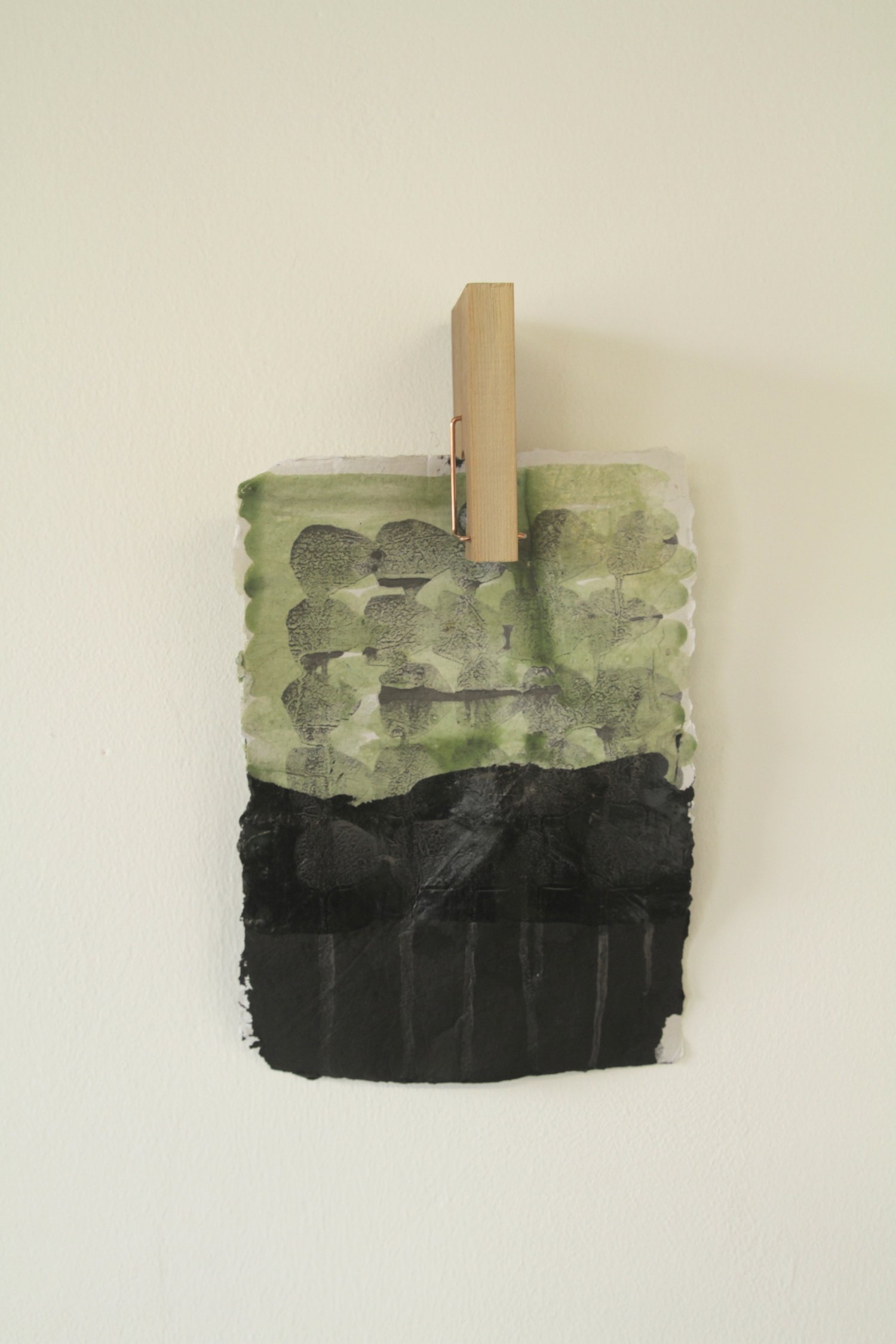t “PRESS”
A series of drawing-works made during AA2A residency at Loughborough University, exploring paper-making as process and paper as material.
October 2021-June 2022,
Scroll down for written blog.



PRESS C series. 2022. Artist-made paper, ink, graphite, wax, wood, copper, marble. (photos: Jes Hill)
PRESS C I.
PRESS C II
PRESS C III
PRESS C IV
PRESS C. V
PRESS d.o. series. 2021 - 2022. Artist-made paper, elastic bands, graphite, ink, wax. (Photos: Jes Hill).

PRESS d.o. IV

PRESS d.o. X

PRESS d.o. V
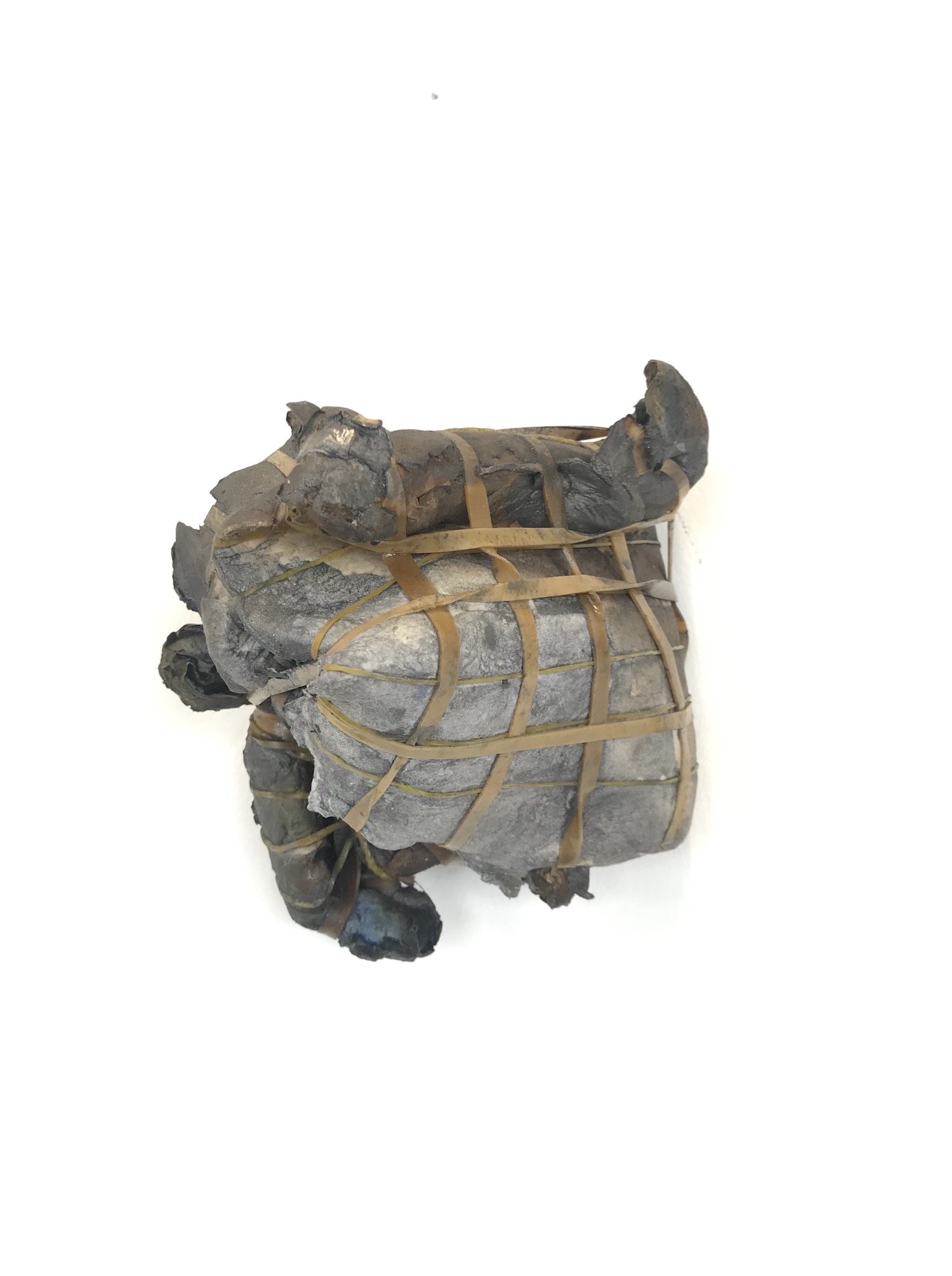
PRESS d.o. IX
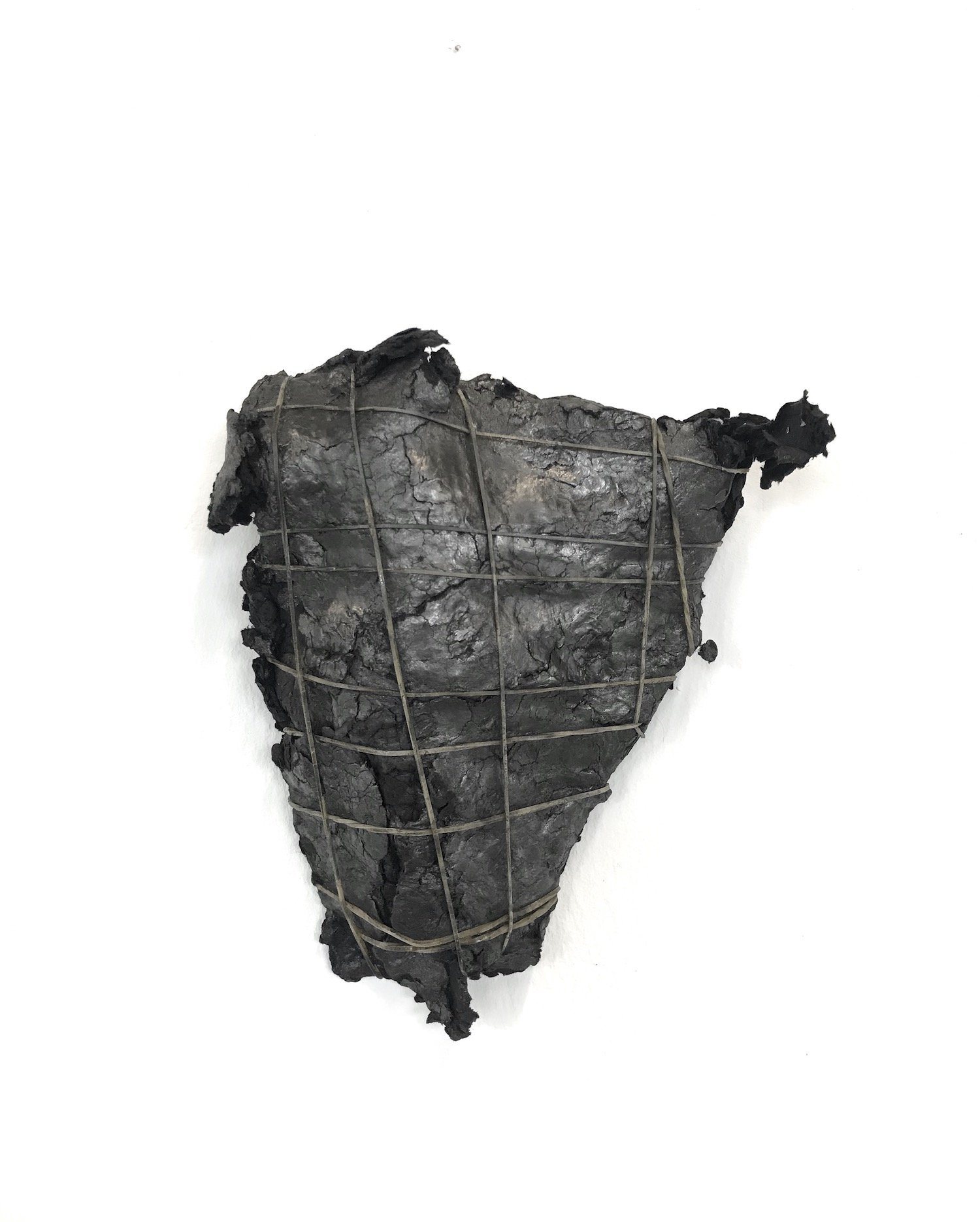
PRESS d.o.I

PRESS d.o. II
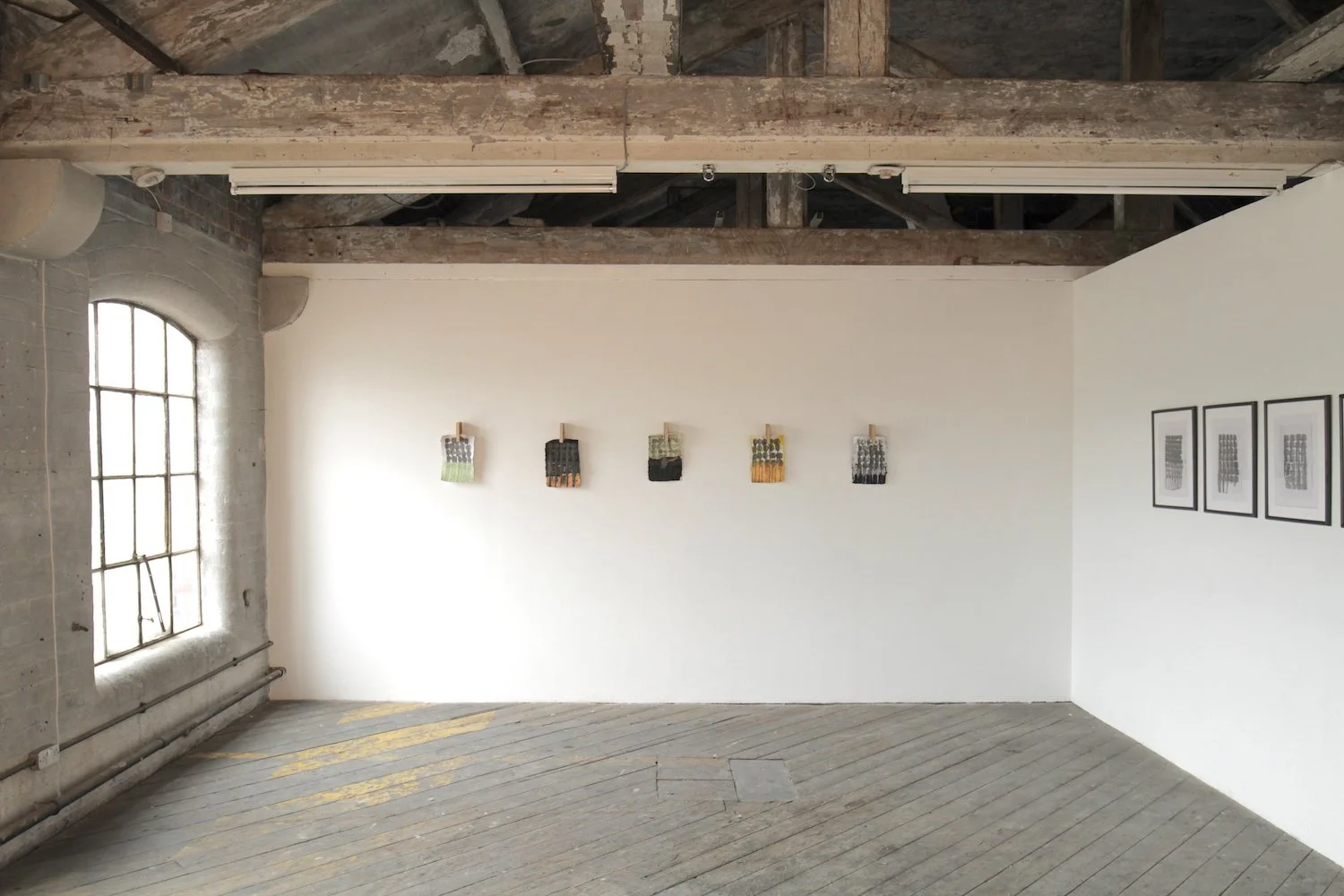
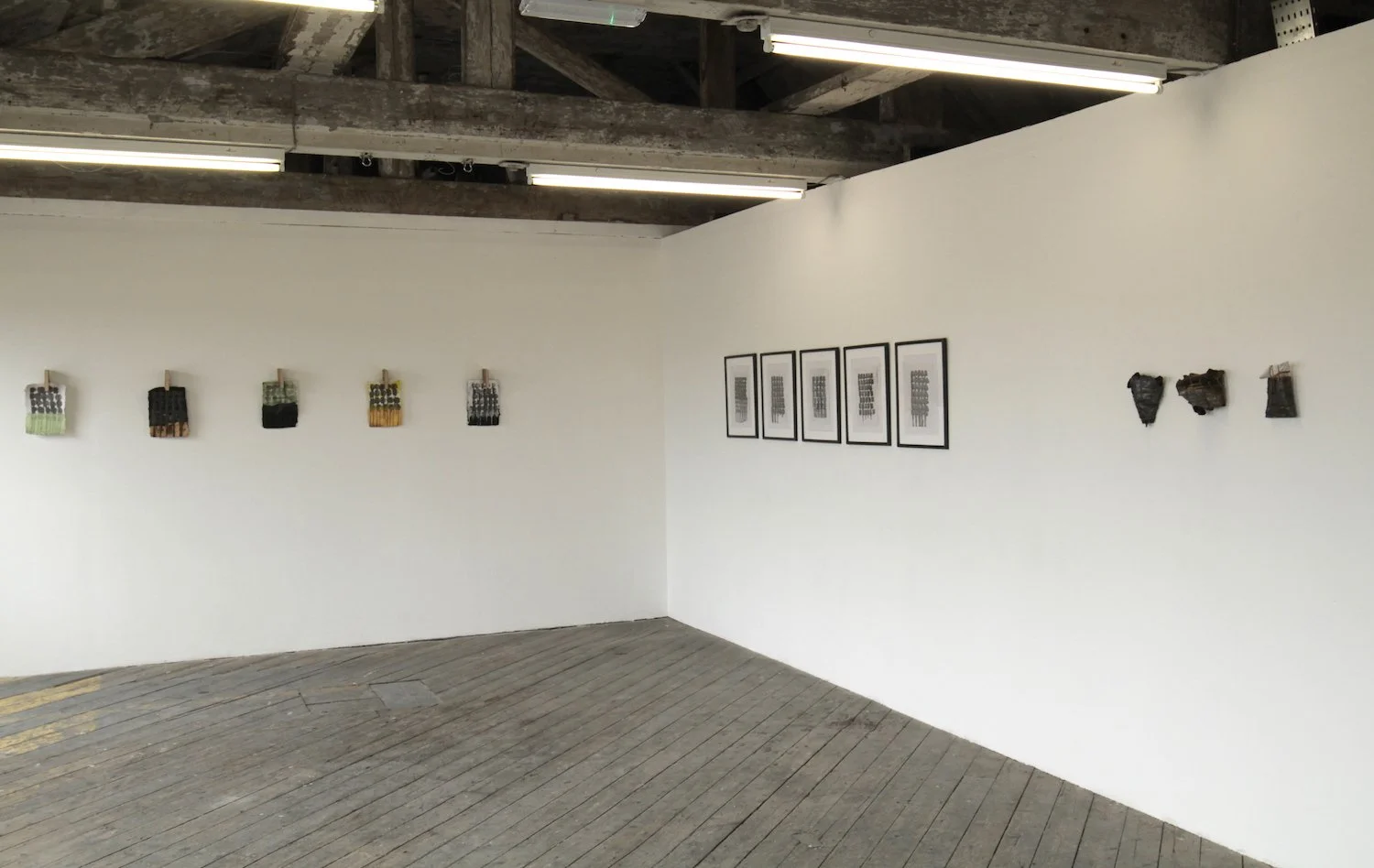

One Thoresby Street. (photos: Jes Hill)
PRESS series. 2021 - 2022. Artist-made paper, graphite, ink, wax.

PRESS II. 2022. Artist-made paper, graphite, wax. 33 x 22 cm

PRESS VIII. 2022. Artist-made paper, graphite, wax. 22 x 23 cm

PRESS VI. 2022. 31 x 21 cm

PRESS III. 2022. Artist-made paper, graphite, wax. 32 x 21 cm

PRESS I. 2021. Artist-made paper, ink, graphite, wax. 33 x 22 cm
Blog
1. starting, not starting
A new project is a negotiation - between starting and continuing, between knowing and not knowing. It is a push to the future and a pull from the past. A holding on and a letting go. The path of a new project is made in response to the new terrain ahead. Within my practice, the oscillation between the knowing and the not knowing is unpredictable...but assured.
What I think I know is that I wish to build upon two taxonomies of my practice – Object Drawings and Writing Drawings and that I will attune myself to the qualities of time, gesture and repetition that arrive from working with selected materials. In the studio I will see how these materials and myself will perform and draw together. I will then play these findings back into the materials as formal instructions.
There is only plot in retrospect.
2. reading for clues
I have decided to explore paper and paper making. In order to explore how this material and myself might perform and draw together. Process heavily informs how I draw, so I expect the process of paper-making to somehow direct the work that comes out of it. I note how my body interacts and behaves with it during the process of paper-making and note any agents of change.The approach is choreographic in order to find a series of instructions to play back into the materials when formally drawing with it. In this case gestures and agents include water, air, suspension, pressure, pressing, pushing, repetition and time. Pressure is an agent and the pressure unit must reach 400.
It is time-consuming and full of surprises and failures. I realise certain things aren’t possible. But I also know that the process makes way for ‘stangerness’ to arrive, and once strangerness has arrived a new way of drawing is often round the corner…
It is also a time to explore what both surface and mark might be, how they might be made and performed. What is surface? Something to approach, to land on, something that holds, that calls to be marked. Surface is the minus of traction, to the plus of mark. It is the dance floor. And what of mark? A line, a distinct form that differs from surface, an addition, a journey, a trace, evidence. Something placed, run along or carved into another. The dance.
I am most interested in the unruly line - one that is faulty, derailed, fragile or transgressive.
The naivety present in being new to paper-making allows me to focus on what is happening, rather than on what should be achieved. It is clear that time, pressure and water are agents of surface. The addition and subtraction of water determines what the point of touch of mark and surface can be. Too little water and the paper breaks. Too much and it becomes dysfunctional or rots. Water has to be added and taken away at just the right moments and at the right time. A fluid surface graduates towards a solid one….
3. churn and lurch
The ‘churn’ and ‘lurch’ of the title refers to the early stages of research. What I am really doing is learning about my relationship with paper as a material - I have experienced how it behaves and misbehaves, how it feels and smells, how it conforms and rebels.
Previously, I had worked with bought/found/scavenged paper (including hand-made). However the qualities of own-made paper have taken me by surprise, throwing me off course and extending the time spent on the churn and lurch of not knowing my direction of travel. I have had to remind myself that my practice is research based, that research holds priority. This is a time for making as thinking and thinking as making. What ever comes form this is (simply) a record of this process.
It has turned out that my own-made paper is more greedy and grabby than I ever imagined. Expecting to work with ink, I quickly learnt that the paper grabbed ink and held it in stasis.
I have now made over 30 drawings and discarded at least four-fifths. I have tried working differently with ink, searching out something that held a friction between stasis and movement. But each time I failed.
This has necessitated a stepping back. and a letting go of where I thought I was going (and where I said I was going). I have had to let go of assuming I would work with certain materials in certain ways. Instead, I have started to revisit and reconsider the signature elements of my practice: time, repetition and gesture as a way to find another path. I have had to question why was I working with making paper? What did this direct relationship with a material process afford the work?
Now I am approaching paper afresh. I have had a small eureka moment, where something was revealed that felt it belonged to me… I am still in the churn and lurch, but the direction of travel is a little clearer.
4. size matters
In order to let go of the direction of travel I thought I was going on, I have gone back to a central methodology and watched my body’s response to the material I was working with. How did my body manoeuvre? What were the repeated gestures? What agency did my body have or provide and how did it compliment that of the agency of the material?
It has become clear that in paper-making the gesture of press is key. Press strengthens, binds and forms. So the surface calls to be marked by pressing. Maybe this is how we can draw together…
In exploring press as a way to draw, I was naturally drawn to working with embossing and moulding. However, neither processes revealed anything intriguing to me and once the work was dry it appeared overly fixed and rigid as if in a state of rigour mortis. I didn’t know what I was looking for but I also knew I wasn’t finding it. In addition another set of problems had arisen. One of my initial ambitions for the AA2A residency had been to explore working on a larger scale through making my own paper. However whenever I scaled up the format of the paper, the Push drawings that I was making felt unresolved. I couldn’t figure out why. I realised that the relationship between the line of the deckle edge and the line of the made mark cannot be ignored. My practice strives to find a space between order and chaos and I often use repetition as a way to create order for the unruly line to reveal itself. The surface becomes a stage for the performed mark. In working with made paper, an innate unruly line was already part of the work i.e. the deckle edge. This deckle-edged line has its own scale that is fixed no matter the scale of the paper. Therefore, any mark-making placed upon the paper will automatically have a relationship with this line. Within larger format drawings this relationship becomes un-configured in the work and this is why, I realised, this work felt unresolved. With smaller formatted work, however, the mark-making placed upon the paper revealed a harmonious and corresponding relationship with the deckle-edge line. In working with this relationship, the surface becomes an integrated part of the drawn object.
5. the cut and dry of it all.
Now I know how paper and myself might perform together. But there are other forces at play. I noticed the blue stain on PRESS I made by the bull dog clip used to suspend the work whilst drawing. The stain is an integral part of the work at rest.
States of wet and dry are constant in paper-making. Soaked blankets and silks are cast off and suspended from racks to dry. Working with these racks over time, I realised that they operate as a frame to the hanging cloths below.
What would happen if the paper surface I was making was suspended in them to dry? How would the form of the drawing develop? What would happen to unruly line when pressed onto this unruly surface when paper and frame both had agency on surface?
Five ball racks were made alongside five pieces of cotton-linter paper. The paper was suspended to dry in the racks and the same approach to drawing through pressing to reveal an unruly line was applied. As a result five object-drawings revealed themselves.


